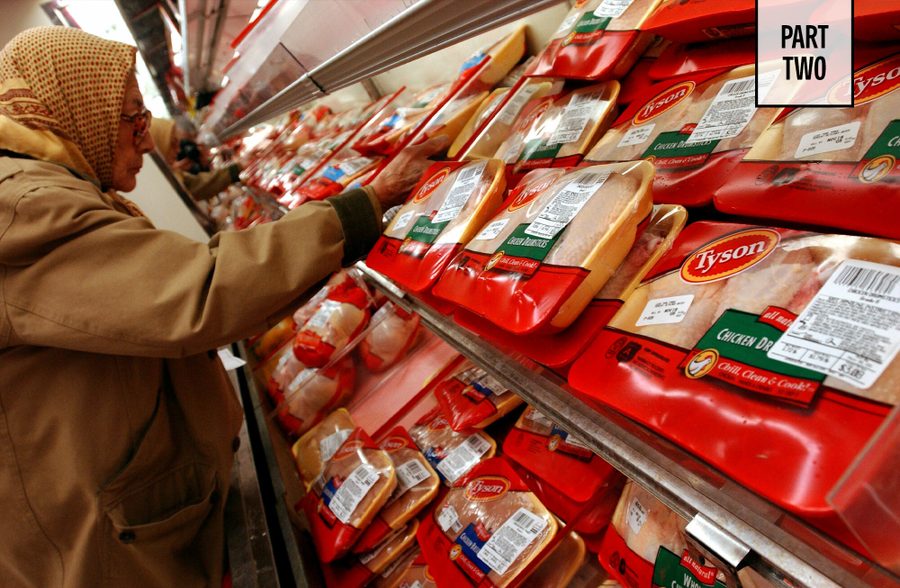The in-house medical care at Tyson Foods allegedly conceals injuries, throwing what it’s like to be a meatpacking worker in the United States into sharp relief.
This is part two in a two-part series. Click here for part one.
Lea este artículo en Español.
The open gash on his right arm oozed blood in a crimson arc, like a neat lipstick smear. It dripped down fast, breaking out into rivulets, so he pushed his arm away from his body. The blood settled in a pool on the floor.
Andre Ngute sustained this painful injury in March 2022 at a Tyson Foods meatpacking plant in the tiny rural town of Columbus Junction, Iowa (population 2,132). He had been working elbow-to-elbow on the kill floor wielding sharp knives when one slipped and sliced him. (Ngute requested to use a pseudonym because he fears retaliation.)
Nurses in Tyson’s on-site infirmary wrapped his arm in brightly colored bandages. “For the rest of the week, I went to the infirmary every day to change bandages,” Ngute, 23, writes in a WhatsApp message about a year later. Tyson provided some accommodations by assigning him the less grueling job of putting numbers on boxes, but he was returned to the kill floor line a week later. The pain wouldn’t go away. With his arm “still hurting badly,” Ngute asked to go to the hospital “to receive appropriate treatment.” But he says the company nurse told him that if he went to the hospital, he’d be solely responsible for the medical costs.
“I never went to the hospital … because I was afraid of the bills,” writes Ngute, who had been in his current position for less than a month and notes that he hadn’t been working at Tyson long enough to qualify for health insurance. (A Tyson spokesperson writes that “team members have access to full health care on their first day of employment” and cited a news release dated January 31, 2023. However, that policy went into effect about a year after Ngute’s injury.)
The on-site care Ngute received — though it may at first appear convenient and benevolent — can also have a more sinister side. It’s part of how Tyson and others in the meatpacking and poultry industry can evade mandatory reporting of injuries to the Occupational Safety and Health Administration (OSHA), according to a November 2022 investigation of Tyson’s on-site nurses by Alice Driver for Civil Eats.
OSHA doesn’t require companies to report minor injuries, but it does require companies to maintain a log of workplace injuries or illnesses if they require more than first aid, time off or lighter duties.
Besides a fatality at the worksite (which must be called in within eight hours), three types of severe injuries — an overnight stay at a hospital, loss of an eye or an amputation — must be reported to OSHA via phone or email, explains Debbie Berkowitz, who had been chief of staff and later a senior policy advisor at OSHA from 2009 – 2015. (She is now a fellow at Georgetown University’s Kalmanovitz Initiative for Labor and the Working Poor.) Other injuries that require medical treatment are recorded on a company’s official log of work-related injuries and illnesses, which OSHA requires only in summary annually.
“The system is designed to make efficient use of the limited number of OSHA inspectors,” Driver writes. “Companies can deflect OSHA’s attention, however, if the nurses they employ give injured workers first aid treatments instead of recommending medical care.”
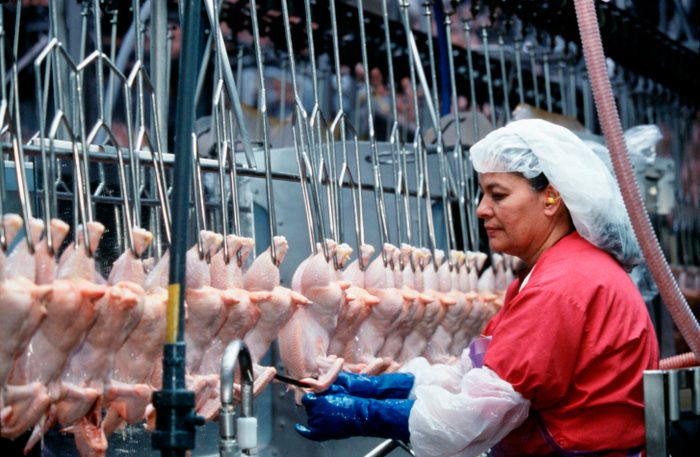
She continues: “This is one of several reasons workers in the Tyson system are not allowed to consult with doctors about an injury unless the on-site nurse recommends it, according to a nurse and several plant workers employed by Tyson. If a worker wants to consult with an outside doctor, they are required to pay for their own care.”
Driver gained special access to how the on-site nurse system works after one of Tyson’s nurses became a whistleblower. The nurse, who asked to remain anonymous because of potential retaliation, told Driver and Civil Eats that Tyson managers, lacking a medical background, pressured nurses to stop what might be considered a normal progression of medical care for injured workers.
“Well, then y’all need to like treat her and keep this from becoming OSHA recordable,” the nurse said, describing to Driver the plant management team where she worked.
An April article in the American Medical Association’s Journal of Ethics coauthored by Berkowitz, Anna D. Goff, Kathleen Marie Fagan and Monica L. Gerrek, titled “Do Clinics in Meat and Poultry Plants Endanger Workers?” describes a similar pattern across the industry: “If a worker goes to their own doctor without company approval, the company claims the injury or illness is not work related, will not record it and will not cover related expenses.”
Across the meat packing industry, when workers seek help at on-site clinics, they are routinely sent back to work even after they complain of pain in their shoulders, fingers and hands, according to Berkowitz and her co-authors. Other times, workers are loaded up on anti-inflammatory medicines like ibuprofen that, in high quantities, can increase the likelihood of stomach ulcers and kidney and heart disease.
“Workers in the meat and poultry industry are ‘captive patients’ in these clinics and often risk disciplinary action and termination if they seek outside medical care,” Berkowitz and her co-authors write. They conclude that on-site workplace clinics “endanger injured workers by delaying medical treatment and perpetuate unsafe conditions in the plant rather than mitigate hazard and prevent injuries and illnesses.”
In a written statement, Tyson Foods asserted that “the health and safety of our team members is our top priority” and that “we do not refuse medical care to our employees.”
It continues: “If a team member gets hurt on the job, we have a required injury reporting process, regardless of how minor we believe any injury to be. We do this because we believe in early intervention and detection so that all injuries can be addressed immediately. We follow a systematic approach for the early reporting, intervention, evaluation, and treatment of injuries and illnesses. It begins with an initial evaluation by facility-based occupational health nurses and progresses through a series of steps including medical provider referral when necessary. First Aid care is available for any team member who needs it.”
The statement also noted there are two safety programs in place, “We Care” and “I’ve Got Your Back,” which “educate and empower every team member to think about and address safety more proactively.” Also noted is that, two years ago, Tyson Foods “launched a pilot project opening a Bright Blue Health Clinic near a number of our facilities that provides easier access to high-quality healthcare for our team members and their families.”
But Tyson declined to comment or respond to most of the assertions, claims and findings in this article, including whether workers face opposition or retaliation for seeking outside medical care without a company recommendation.
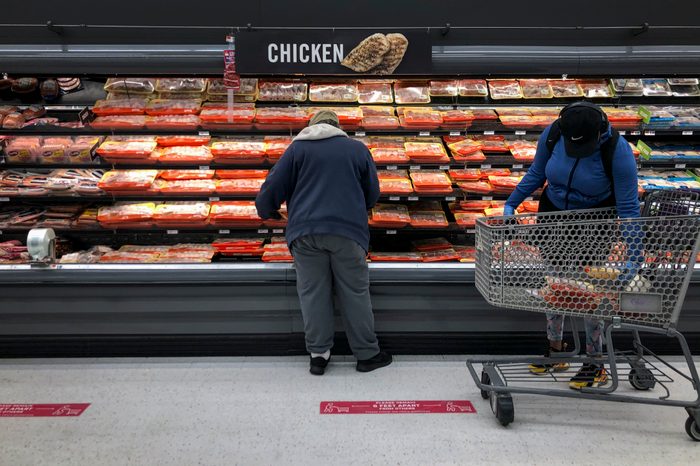
More dangerous than a sawmill
Michael Felsen, who worked as an attorney for nearly four decades at the U.S. Department of Labor and now serves as an advisor for the National Council for Occupational Safety and Health, writes in an email to In These Times that “recent studies show that meat and poultry processing plants continue to have higher severe injury rates than other occupations also considered hazardous, like sawmills, building construction, and oil and gas drilling.” He adds that “workers are routinely and repeatedly exposed to moving machine parts that can cause traumatic injuries, including crushing, amputating, slicing, and burning. And the cumulative trauma of repeating the same motions thousands of times a day often cause severe and disabling musculoskeletal injuries, the result of what are known as ‘ergonomic hazards.’”
According to Felsen, “reports from the Government Accountability Office and other sources show that worker injuries are very likely to be seriously underreported.” Many companies have punitive point systems in which workers who miss work because of injuries are assigned points that could lead to being fired, and he cites the in-house clinics as a way for companies to keep injuries under wraps.
“Workers are often intimidated into not reporting work-related injuries and illnesses out of fear of being fired. So, even the very high recordable injury rates these processing plants show are undoubtedly misleadingly low,” Felsen said. “The situation is even worse than it appears.”
In interviews with dozens of workers for the articles in this series, In These Times heard similar stories from workers complaining about the short shrift paid to their health and safety concerns and a high-pressure work environment that forces them back to work on the line after injuries.
As Berkowitz said to Driver: “Workers in these meat plants have incredibly high rates of carpal tunnel syndrome, but the meat industry has figured out a way to hide these rates from the public.”
Workers of color like Ngute, an immigrant worker from Cameroon, are disproportionately represented in the meatpacking and poultry industries that include almost 500,000 workers nationwide. Almost half of meatpacking workers are low-income with about 12.5% drawing earnings below the poverty line. Only 15.5% have health insurance.
One year after his injury, Ngute’s scar runs deep down his arm, a punctuation mark on his body, a backlash against his Black skin. “I hoped that the scar would not stay on my arm,” he writes. He was never able to receive paid time off, get workers’ compensation nor claim damages — or, because he would have to pay for it himself, go to the hospital and see a doctor for care.
Several workers at Tyson say the most the company does when they suffer musculoskeletal injuries is provide them with a bag of ice or painkillers before asking them to go back to work. In each step of the process after an injury, workers interviewed for this article said they have to advocate for themselves to receive proper medical care.
The interviews and research for this article revealed that workers are in a relentless struggle to break free from the crushing toil — even if only for a short while — to alleviate the pain of aching bodies with proper medical care.
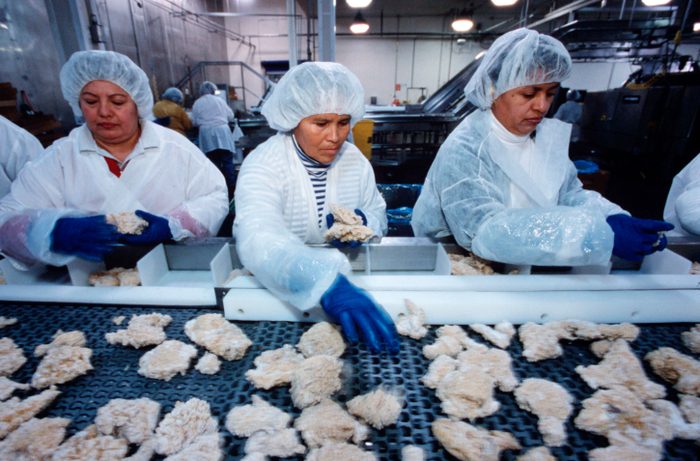
“When week four or five arrives and you continue insistently that you want to see the doctor, then they make a quick meeting with the head nurse,” says Columbus Junction Tyson worker Mercedes Flores (a pseudonym). “The sold-out supervisors suggest that they can change your job, but that you do not go to the doctor. It is harassment in which the injured person has to take advantage of their potential and fight for the simple right to go to the doctor.”
By preventing a medical record, the on-site first aid may also weaken workers’ chances of collecting workers’ compensation and other damages after injuries.
Iowa’s system of compensating injured workers — and its former workers’ compensation commissioner Chris Godfrey — became a focus of Tyson’s in 2010 when the company “drew a bullseye on the official who oversaw Iowa’s system for compensating injured workers,” according to a 2015 ProPublica investigation.
Godfrey “had annoyed Tyson with a string of rulings that, in the company’s view, expanded what employers had to cover, putting a dent in its bottom line,” according to the investigation. So, Tyson worked hard to support Republican Terry Branstad’s run for governor and, once he was elected, helped Branstad defend his decision to cut Godfrey’s salary by more than 30% (after Godfrey refused to resign).
“Over the past 25 years … Tyson has taken a lead in reshaping workers’ comp, often to the detriment of workers,” according to ProPublica. “Tyson’s story also tells a broader one about American politics: How time after time, one determined company, facing a challenge to its profits, can bend government and the law to its will.”
Corporate paternalism and a dubious honor
In January 2015, OSHA began requiring employers to report severe worker injuries on the level of an amputation, loss of an eye, or an overnight stay in the hospital. According to a March 30 blog post from the Economic Policy Institute, OSHA data from 29 states (including Iowa) shows that, between January 1, 2015, and May 31, 2022, employers reported 74,025 workers with severe injuries — an average of 27 per day. Name-brand enterprises including the U.S. Postal Service (516,760 employees in 2022), Walmart (1.6 million U.S. employees), UPS (444,000 employees) and FedEx (249,000 employees in 2022) top the list, unsurprising given the large number of workers they employ.
But Tyson, which employed 142,000 workers in 2022, ranked fifth, with 279 severe injuries, earning the dubious distinction of leader among meatpacking and poultry companies. In comparison, the unionized Ford Motor Company, with 90,000 employees in 2022, had 41 reported severe injuries.

Tyson Foods is the second-largest meatpacker in the world. With 241 factories in the United States, it’s the country’s largest poultry producer. It was founded in 1935 by John W. Tyson, whose relatives, including his grandson and great grandson, continue to be top executives and involved in the company today. Tyson ended the 2022 fiscal year with record-breaking revenue of $53 billion, a 13% increase over the previous year. Its net income grew to $3.25 billion, a 6% increase over 2021.
“Tyson’s business approach is a blend of corporate paternalism, evangelical fervor, and capitalism,” University of Iowa ethnographer Kirsty Nabhan-Warren wrote in her 2021 book, Meatpacking America: How Migration, Work, and Faith Unite and Divide the Heartland. The company, Nabhan-Warren wrote, has more than 115 in-house chaplains, the majority of them former U.S. Army chaplains, who act in the factories as management enforcers imbued with religious authority.
A typical holiday email to workers from one of the chaplains, which is translated into French, Spanish, and the Burmese dialect Hakha Chin, reads: “Don’t let us get ahead of ourselves. First things first. Yes, you will get to decorate your Christmas trees and do all the good stuff. But you have to work first in order to have the money to do that.” The chaplains also use scripture (“… Know ye that the LORD, He is God; it is He that made us, and not we ourselves; we are His people, and the sheep of His Pasture”) to shame workers into working harder, with admonishing messages not to be “lazy” sprinkled with discordantly chirpy colloquialisms like “Bye now!” and smiling emojis, according to Nabhan-Warren.
Nabhan-Warren toured Tyson’s Columbus Junction plant as research for the book and marveled at the highly skilled work of the meatpackers while recognizing the mental and bodily toll of their grueling jobs. “The workers on the line talked about the physical pain they are in, the nightmares they have as a result of the violent work, and the smell of death is always on their bodies,” she writes.
Some of the bloody injuries workers sustain at Tyson harken back to Upton Sinclair’s The Jungle—which graphically depicted the exploitative working conditions in the “river of death” of meatpacking. Ngute’s injury also echoes a 1998 Department of Labor report, which found that workers were “stationed so close together they lacerated coworkers with their knives.”
The meatpacking industry’s safety issues have been cataloged extensively for 18 years by Human Rights Watch reports such as “Blood, Sweat, and Fear” and “When We’re Dead and Buried, Our Bones Will Keep Hurting,” which examine abusive business practices and violations of workers’ rights. Beyond the bodily suffering, the report found that the workers’ low wages “paralleled the decline in the prevalence and collective bargaining power of unions.”
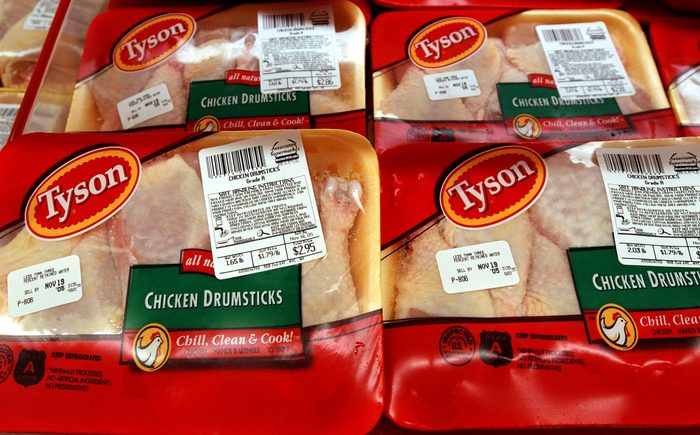
“I think the ruthlessness of Tyson’s labor policies and its nonunion status are closely linked,” said University of Iowa history professor and author Colin Gordon referring to the Columbus Junction Tyson plant. “Such an environment might encourage organizing in one respect, but in important other respects, it raises the stakes and magnifies the risks for the workers involved.”
OSHA — due to limited resources and underfunding — only conducted 24,333 inspections in the 2022 fiscal year. At that rate, it would take more than 160 years to inspect the millions of workplaces across the nation, according to Berkowitz and her colleague Patrick Dixon.
One problem with having workplace safety protections depend on governmental expertise, however, is that it removes workers as the prime social agents responsible for improving their lot, and transfers power to administrative professionals far removed from the day-to-day realities of the shop floor. “Indeed, the whole history of social regulation in the industrialized West has shown that no army of government inspectors can ensure management compliance without benefit of systematic, organized pressure at the work site itself,” wrote the historian Nelson Lichtenstein in his 2013 book, A Contest of Ideas: Capital, Politics, and Labor.
Working at Tyson was a step up for Teresa Chavez (a pseudonym) after a string of grocery and manufacturing jobs that paid $16 to $18 an hour. Tyson offered her a $5,000 sign-on bonus and $18 an hour, which was bumped up to $20 an hour if she didn’t miss any workdays in a pay period. What’s more, she could work with her parents, the family piling into one car to drive into work, saving on gas.
Soon, the boost in earnings couldn’t make up for the pain in her hands. Sitting at her kitchen table in February, she spoke about how tingling sensations had begun in December, and then her hands fell numb. Simple routines — picking up her house keys, turning a doorknob, thumbing her phone — became an excruciatingly painful ordeal. She turned to her family for guidance, and they turned to Google, initially settling on arthritis as the cause.
Chavez says she had been working nearly 12-hour shifts from 6 a.m. to 5:30 p.m. on Tyson’s boneless cutline. When she finally went to a doctor outside the company’s nurse network, she said the diagnosis was carpal tunnel syndrome. She tells In These Times that she was told she could either have surgery or get another job. The news was devastating. She said her Tyson managers were angry that she went for medical care outside of its on-site nurses.
Chavez’s higher earnings at Tyson allowed her to move out with her fiancé. She hadn’t finished unpacking when I visited her in Iowa City in February. Her living room was littered with overstuffed boxes, spilling clothes, books and DVDs. Since December, she’d barely been able to hold her phone, much less unpack. She said Tyson put her on one-year medical leave without pay, saying the injury had happened outside of work. But worried about paying her rent, she couldn’t afford to lose all income. She said she went back to UPS, where she worked before Tyson, “to see how my hands are doing,” and would see if going back to Tyson made sense. “To be honest, I’m not 100% sure,” she tells me.
Despite OSHA guidelines to rotate employees to avoid musculoskeletal disorders, reports have shown the company can neglect these injuries. “For injuries the sold-out nurses know are the causes of repetitive or cumulative movements … they follow you up for a week and generally the next check-up you are discharged,” says Flores. “But if you say you’re still not feeling well, then they give you the option” of ice, pain cream or pills. “If you’re being a crybaby, they give you two things at the same time.”
Flores says she got some accommodations after her injury from the impact of cumulative movements, and her workload was reduced by half. “That’s what they did to me. But when they sent me to the sold-out doctor, he took that off and discharged me, and I was dying of pain.”
“It was evident,” Flores says, “that I was not well and no one cared about me.”
This is part two in a two-part series. Click here for part one.
This story was supported by the Economic Hardship Reporting Project.
Luis Feliz Leon is an associate editor and organizer at Labor Notes.
